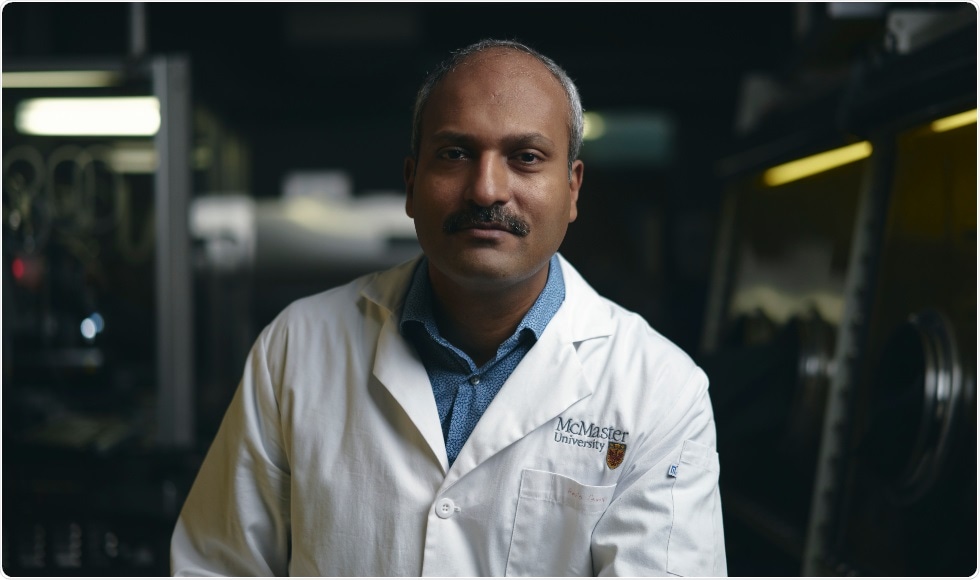Researchers from McMaster University have created a new type of cultivated meat using a process that offers more natural flavor and texture than other substitutes to conventional animal meat.

Ravi Selvaganapathy. Image Credit: Jin Lee.
Scientists Ravi Selvaganapathy and Alireza Shahin-Shamsabadi, both from the University’s Department of Biomedical Engineering, have invented a method to make meat by piling thin sheets of cultivated muscle and fat cells grown together in a laboratory environment. The procedure is derived from the process used to cultivate tissue for human transplantation.
The sheets of living cells, each with a thickness similar to that of a sheet of printing paper, are first grown in culture. Then, they are concentrated on growth plates and finally peeled off and folded or stacked together. The sheets tend to bind to each other naturally before the cells die.
The layers can be piled into a solid piece of any thickness, and “tuned” to mimic the fat content and marbling of any cut of meat—which is a benefit over other substitutes, says Selvaganapathy.
We are creating slabs of meat. Consumers will be able to buy meat with whatever percentage of fat they like - just like they do with milk.”
Ravi Selvaganapathy, School of Biomedical Engineering, McMaster University
As mentioned in the Cells Tissues Organs journal, the team demonstrates the principle of preparing meat from available mouse cell lines. While they did not consume the mouse meat reported in the research article, they later prepared and cooked a sample of the meat they had made from rabbit cells.
It felt and tasted just like meat.”
Ravi Selvaganapathy, School of Biomedical Engineering, McMaster University
According to Selvaganapathy, there is no basis to consider that the same technology would not apply for growing beef, pork, or chicken, and the model would be suitable for large-scale production.
The researchers were motivated by the meat-supply crisis wherein the global demand is rising while current meat intake has put a strain on land and water supplies and produces a troubling amount of greenhouse gases.
Meat production right now is not sustainable. There has to be an alternative way of creating meat.”
Ravi Selvaganapathy, School of Biomedical Engineering, McMaster University
The team points out that growing viable meat without the need to raise and harvest cattle would be much more economical, hygienic, and sustainable.
Although other types of cultured meat have been historically prepared, McMaster researchers conclude that they have the greatest ability to create products that customers can embrace, appreciate, and afford.
The investigators have set up a start-up company to start commercializing the technology.
Source:
Journal reference:
Shahin-Shamsabadi, A & Selvaganapathy, P R (2021) Engineering Murine Adipocytes and Skeletal Muscle Cells in Meat-like Constructs Using Self-Assembled Layer-by-Layer Biofabrication: A Platform for Development of Cultivated Meat. Cells Tissues Organs. doi.org/10.1159/000511764.